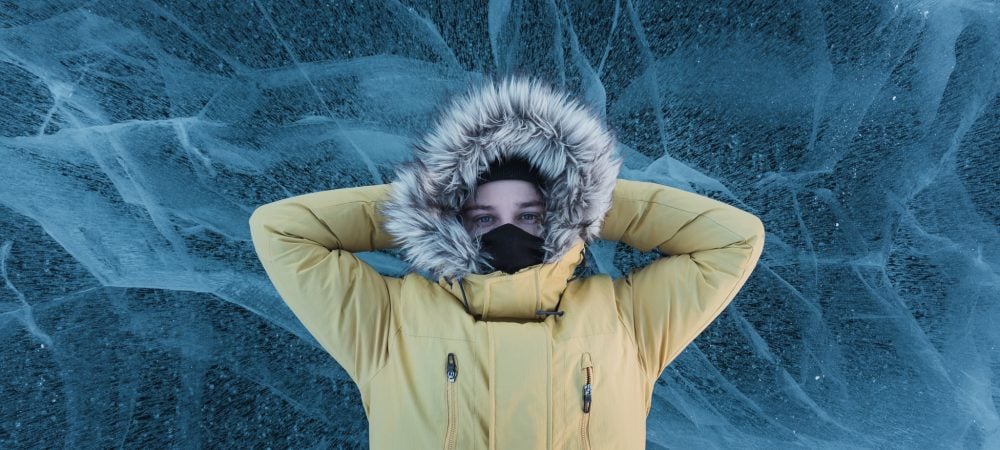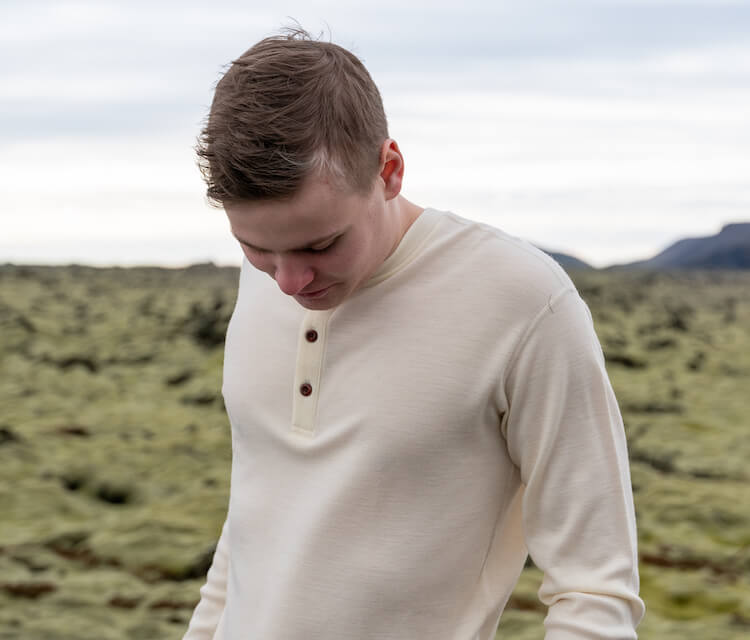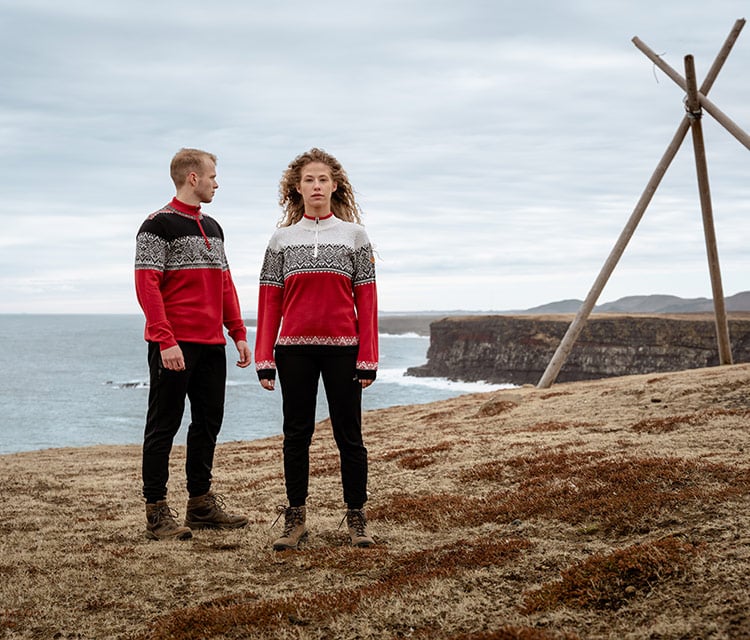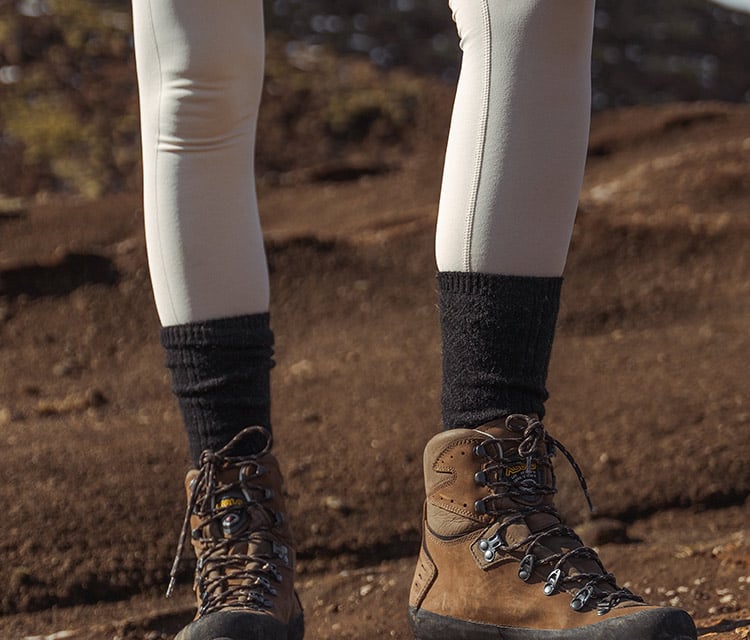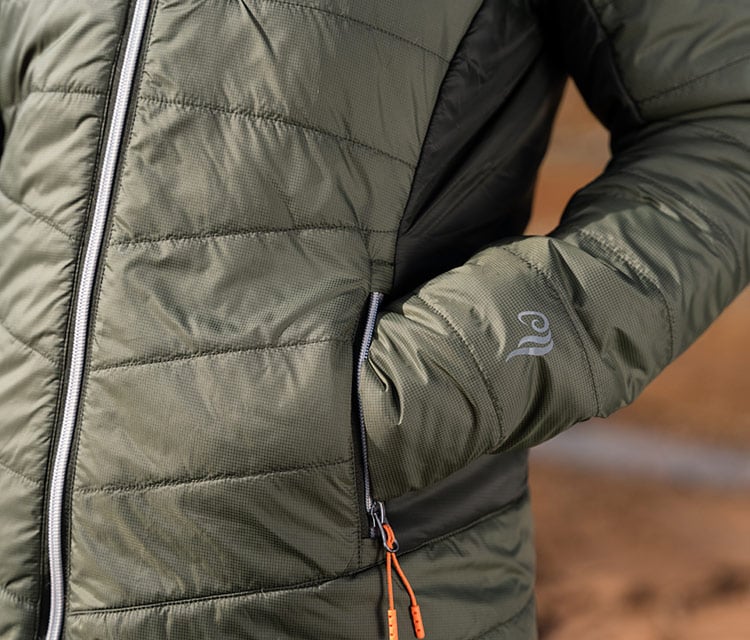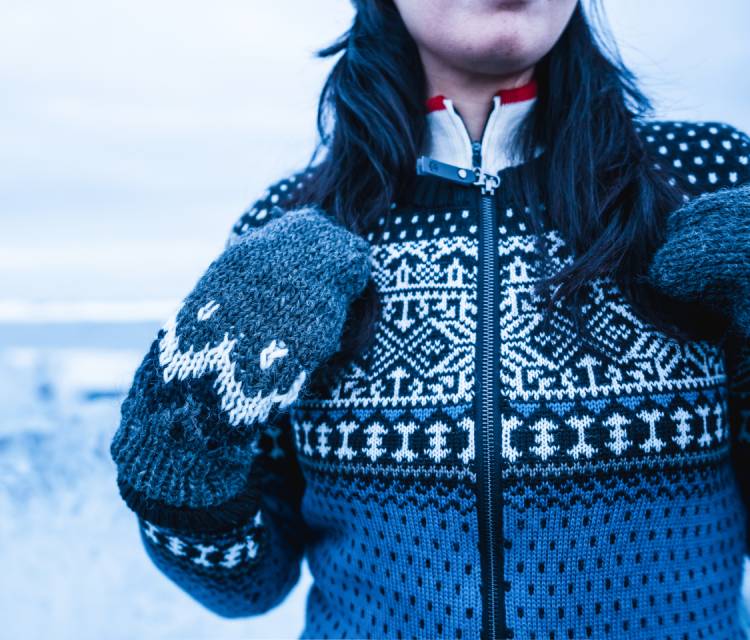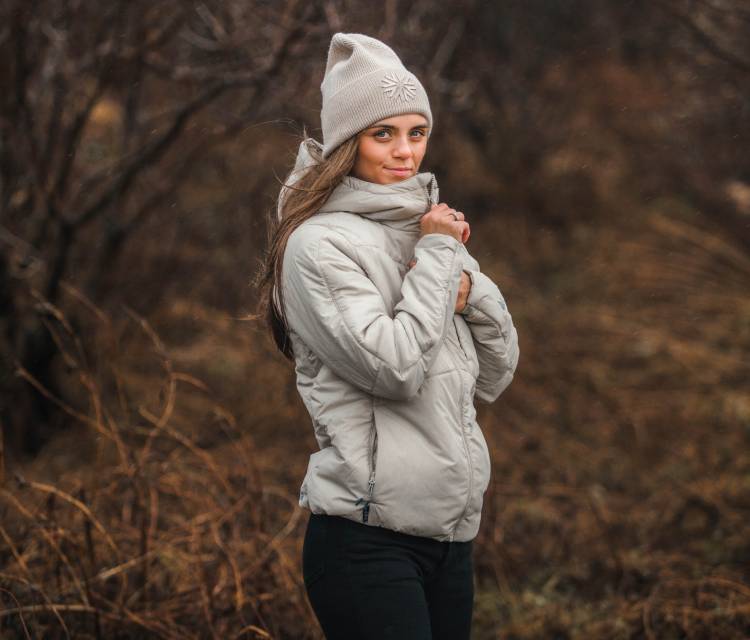Cold Weather Clothing Guide
CONTENTS:
Key findings for winter clothes:
What are the warmest clothing materials?
Best pure materials for keeping warm
Is polyester good for winter?
Does silk keep you warm?
Best material blends for winter
Is acrylic warm?
Types of clothes to wear in winter
Best hat material for winter
Best socks material for winter
Best pyjama materials for winter
Best trouser material for winter
Do denim jackets keep you warm?
Best sports fabric for winter
Best ski suit fabric for winter
Methodology
Sources
Key findings for winter clothes:
- Wool scientifically keeps you warmer than cotton and polyester, with Icelandic wool being the warmer variant
- Spandex is the best sports material to keep you warm when exercising in winter, closely followed by Gore-tex
- A wool-acrylic blend is the best fabric blend for keeping you warm, followed by cotton-acrylic
- Cotton trousers will scientifically keep more heat in your body than denim
What are the warmest clothing materials?
Our research found that the warmest material is wool, with thicker Icelandic wool being even better, and a wool-acrylic blend being somewhere in the middle. The warmest clothing for you will be dictated by the number of layers you can use, and the thickness of the materials you are wearing.
To work all this out, our piece analysed both the materials that will keep you warm inside and those that will stop the chill outside. As a general rule, the same findings can be applied to both scenarios as the ranking of materials and how warm they will keep you will be the same.
Alongside a mechanical engineer, we have scientifically looked at which materials would keep us the warmest. Importantly, this analysis does not, and cannot, take into account other properties like breathability, odor resistance, waterproofness and weight, for example.
Best pure materials for keeping warm
Which pure materials (not blends) are scientifically the best at keeping us warm? Using the thermal coefficient we can see the following:
| Ranking | Materials | Temperature | Thermal Conductivity |
| 1 | Icelandic wool | 15 °C | K=0.016 |
| 2 | 100% Wool | 15 °C | K=0.039 |
| 3 | 100% Cotton | 15 °C | K=0.040 |
| 4 | 100% Polyester | 15 °C | K=0.050 |
| 5 | Silk | 15 °C | K=0.066 |
The thermal conductivity indicated by the K coefficient on the right essentially tells you how good that material is at keeping the heat in, the lower the number the more heat it will keep in your body.
Icelandic wool is thicker than other wool therefore keeps more heat in your body, so that would lead you to stay warmer. It should be noted however that the minute differences in the numbers here between 100% wool and cotton would be hard to tell. It’s mainly about layering and keeping thick layers of materials like wool and cotton.
In short: Icelandic wool and regular wool will scientifically keep you the warmest but staying warm depends on the thickness of your materials and how you layer clothes.
Is polyester good for winter?
It’s clear to see that scientifically wool and cotton are better thermal insulators than polyester. Despite this, polyester is a good material for winter and would be scientifically better than a cotton-acrylic blend.
Does silk keep you warm?
Silk when compared to most other materials will not keep you warm as it has a higher thermal conductivity than other materials meaning more heat can escape from your body. It is however better at keeping you warm than a cotton-acrylic blend or a cotton and polyester blend. Silk is often not good for keeping you warm due to it being typically thin, but scientifically, its properties lend it to being a satisfactory thermal insulator.

Best material blends for winter
Material blends will take a natural product like wool or cotton and team it up with man-made fabrics like polyester to keep costs down and produce different clothing items. In general, blends won’t keep you as warm as 100% wool, but they can provide better heating insulation than cotton.
| Ranking | Materials | Temperature | Thermal Conductivity |
| 1 | Wool-acrylic blended | 15 °C | K=0.035 |
| 2 | Cotton-acrylic blended | 15 °C | K=0.072 |
| 3 | Viscose+Lycra | 15 °C | K=0.104 |
| 4 | Cotton+Polyester p | 15 °C | K=0.120 |
| 5 | Melange+Polyester | 15 °C | K=0.136 |
Blends may be cheaper in general but wearers should note that acrylic’s breathability is far worse than wool so you need to pick your choices based on truly how cold it’s going to be and your own needs for your body (people who sweat more might want to choose sports fabric for example).
In short: When it comes to material blends, a wool-acrylic blend is scientifically the best choice to keep warm when staying warm inside.
Is acrylic warm?
Acrylic on its own is warm and warmer than when blended with cotton, but not as warm as something like wool or cotton on its own. It is soft and has a wool-like feel but it can degrade quicker than natural fibres and does not allow for much breathability.
Types of clothes to wear in winter
For this section, we took a cool winter’s day (5°C) and a chilly inside temperature (15°C), analysed the materials of specific clothing items and saw how they would perform at keeping the heat in our bodies.
While our analysis breaks down the thermal conductivity of each material, therefore how much heat it keeps to your body, it doesn’t account for layering. Our analysis should however give you a good idea of what you should be wearing in those layers!
Best hat material for winter
| Hats Ranking | Material | Temperature | Thermal Conductivity |
| 1 | Wool | 5°C | K=0.036 |
| 2 | Cotton | 5°C | K=0.039 |
| 3 | Knit | 5°C | K=0.040 |
| 4 | Polyester | 5°C | K=0.048 |
| 5 | Twill | 5°C | K=0.078 |
The science says that the best material for winter hats is wool, then cotton. This might not be surprising, but if we consider the analysis of material blends too, we can see that a wool-acrylic blend is even warmer than these options. The hat choice you make should ultimately depend on the quality and thickness of the material, not just which fabric you prefer.

Best socks material for winter
Winter socks are an essential item to stay warm in the cold, both outside and inside. But what material should you be wearing on your feet to keep as much heat inside you as possible?
| Socks Ranking | Material | Temperature | Thermal Conductivity |
| 1 | Wool-acrylic blended | 15 °C | K=0.035 |
| 2 | Wool | 15 °C | K=0.039 |
| 3 | Acrylic | 15 °C | K=0.054 |
| 4 | Cotton-acrylic blended | 15 °C | K=0.072 |
| 5 | Viscose+Lycra plated | 15 °C | K=0.104 |
| 6 | Cotton+Polyester plated | 15 °C | K=0.120 |
| 7 | Melange+Polyester plated | 15 °C | K=0.136 |
Technically, a wool-acrylic blend will keep your feet the warmest, closely followed by 100% wool. The acrylic element in the blend will mean it is a lot less breathable than natural wool though, hence why it keeps more heat in. This choice will depend on budget and how comfortable you are with such feelings of sweat on the feet.
Best pyjama materials for winter
How do these materials apply to actual clothing choices in winter? For this example we took a chilly room in the winter to compare pyjama materials to see which scientifically is going to keep you warmer. Again, this is purely a material analysis and doesn’t account for you cosying up inside blankets and many layers, but it should help with your next decision of which pyjama set to buy.
| Pyjama Rank | Material | Temperature | Thermal Conductivity |
| 1 | Polyester Fleeces | 15 °C | K=0.034 |
| 2 | Cotton | 15 °C | K=0.040 |
| 3 | Polyester | 15 °C | K=0.050 |
| 4 | Silk | 15 °C | K=0.066 |
Out of the typical pyjama materials you will be warmest in polyester fleece fabric, followed closely followed by cotton. Silk pyjamas won’t keep you as warm but that might be a key decision for some who need to cool down. Those who wear silk head wraps also have the added benefit of keeping moisture in your hair, a preference for those with extremely curly styles.
Best trouser material for winter
Technically, if you had the same thickness, cotton and linen would be warmer than denim and leather in an analysis of thermal conductivity. However, we know that in particular with trousers, manufacturers use different thicknesses of material for varying styles and occasions.
For our analysis of trouser materials we applied an average thickness from a manufacturer to try and realistically compare the thermal conductivity of trouser materials. Here’s what we found:
| Trouser Ranking | Material | Temperature | Thickness (m) | Thermal Conductivity |
| 1 | Cotton | 5°C | 0.00202 | K=0.028 |
| 2 | Denim | 5°C | 0.00381 | K=0.039 |
| 3 | Leather | 5°C | 0.00301 | K=0.13 |
| 4 | Linen | 5°C | 0.00198 | K=0.16 |
Scientifically, a good pair of cotton trousers would be better at keeping in heat than denim, not good news for your favourite jeans. Our analysis did reveal however, that leather and linen are definitely not good choices for the winter. If you’re looking to truly keep warm in a harsh outdoor winter, thermal base layers are a better decision underneath your favourite trousers.
Do denim jackets keep you warm?
If you want to wear a denim jacket outside in the winter they’re likely to keep you warmer than a leather jacket but there are many other materials that will keep you much warmer. Wool, polyester fleece, wool-acrylic blend, or a down-synthetic jacket will scientifically insulate you better.
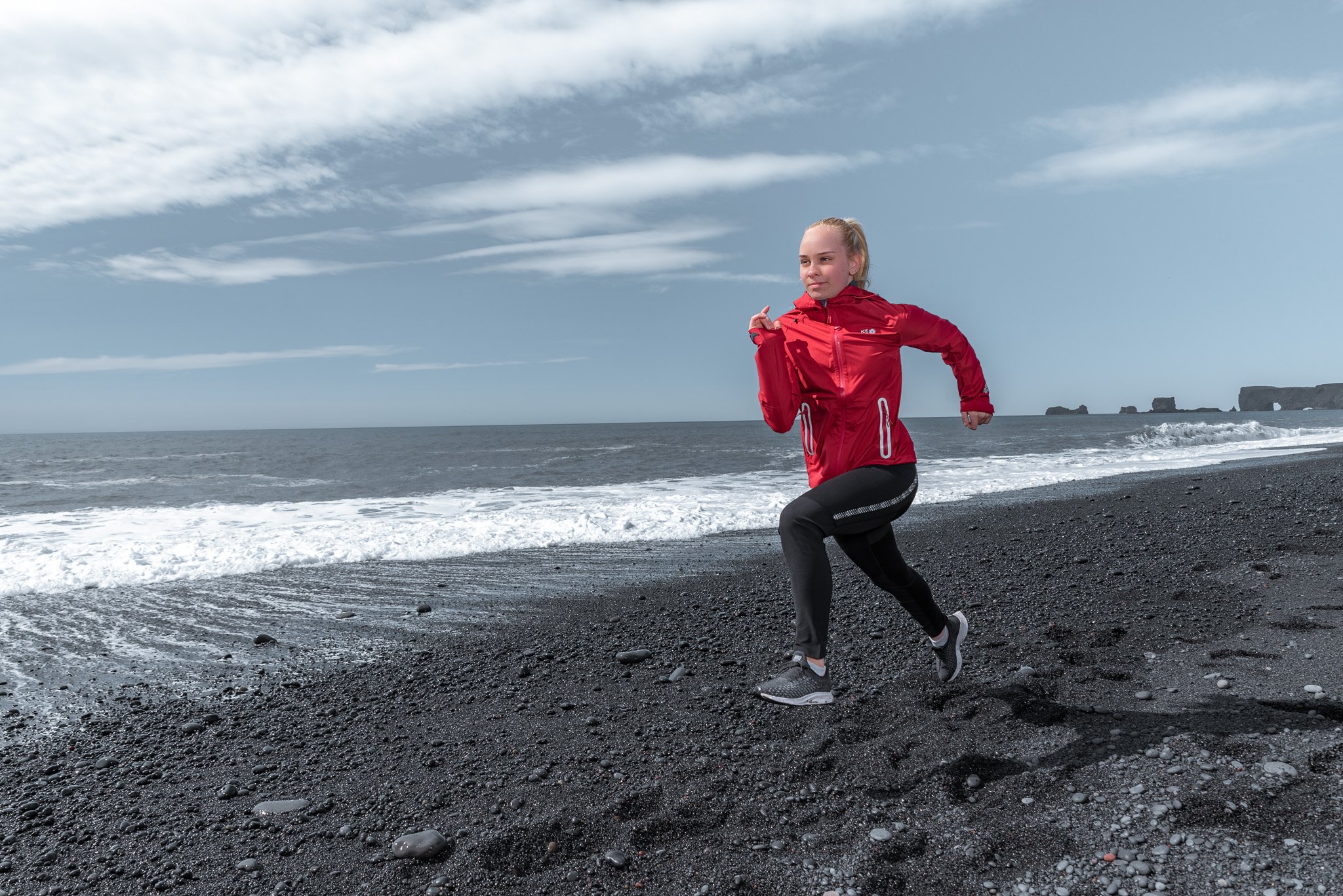
Best sports fabric for winter
While you may get warm when exercising in the winter anyway, depending on how cold it is, you might want to ensure you’re wearing the most appropriate layers to keep you from getting too chilly. The following are the best sports materials to keep you warm according to science.
| Sports Clothing Rank | Material | Temperature | Thermal Conductivity |
| 1 | Spandex | 5°C | K=0.021 |
| 2 | Gore-Tex | 5°C | K=0.022 |
| 3 | Cotton | 5°C | K=0.039 |
| 4 | Rubber | 5°C | K=0.123 |
| 5 | Mesh/Polyester | 5°C | K=0.144 |
| 6 | Bamboo fibers | 5°C | K=0.188 |
| 7 | Neoprene/Polychloroprene | 5°C | K=0.189 |
| 8 | Nylon | 5°C | K=0.201 |
Spandex and Gore-Tex are the best sporty materials for keeping you warm when you exercise or are lounging in sports gear. The difference between the two is 0.001 which essentially means that it would be impossible for a person to tell the heat conductivity difference (unless one was double layered for example).
Best ski suit fabric for winter
We also took a look at the thermal insulation of some ski suit type materials. Scientifically, a down and cotton blend is the best material for keeping warm when skiing, and a totally synthetic insulation will keep you warmer than a fleece alternative.
| Ranking | Material | Temperature | Thermal conductivity |
| 1 | 50% Down/50% Cotton | 5 °C | K=0.037 |
| 2 | Synthetics insulation | 5 °C | K=0.042 |
| 3 | Fleece insulation | 5 °C | K=0.053 |
Methodology
We worked with a mechanical engineer who specialises in energy and heat. They analysed the different coefficient of thermal conductivity of a range of clothing items (and their materials) to see how easily heat passes through them. This was based on a typical cold inside temperature (15°C) and a cold outside day (5°C). The materials were ranked based on their heat conductivity, specifically, the materials which conduct the least were ranked higher in keeping an individual warm. The thermal conductivity coefficient was worked out by using a stable environmental temperature, a similar comparable thickness (apart from trousers), and existing data on materials and their thermal conductivity. It should be noted that the thickness of clothing would affect the thermal coefficient and insulation of the materials. For example, if you had a much thicker layer of cotton than polyester fleece, it likely would be warmer. For this analysis though, we used a level playing field to analyse the materials in their own right and thermal properties.
Sources
- Heat and Mass Transfer: Fundamentals & Applications, Afshin Jahanshahi Ghajar and Yungus A. Cengel (2014 ed.)
- Icelandic yarn from UNITEX (https://www.unitex-factory.com/icelandic-yarn-unitex/)
- ‘International Energy Agency: Heat, Air and Moisture Transfer’ in Insulated Envelope Parts. Final Report, Vol. 3, Task 3: Material Properties, M. Kumar Kumaran
- ‘Functional Properties Improvement of Socks Items Using Different Types of Yarn’, Md. Mehedi Hashan1, K. M. Faridul Hasan, Md. Fazle Rabbi Khandaker1, Krisna Ch. Karmaker, Zhongmin Deng, Masud Jamil Zilani (http://article.sapub.org/10.5923.j.textile.20170602.02.html)
- ‘Feather waste as a thermal insulation solution: Treatment, elaboration and characterization’ (August 2019), Journal of Industrial Textiles
- Mechanics of Sport: Ski Clothing Guide (http://www.mechanicsofsport.com/skiing/equipment/clothing.html)
- Cloth thickness and weight (https://propercloth.com/reference/fabric-thickness-weight/)

